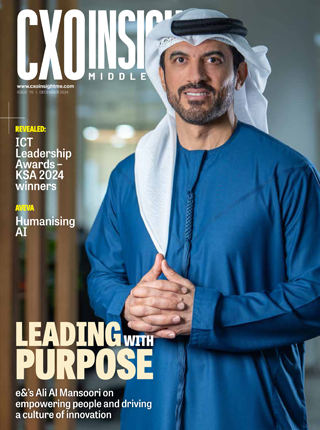What exactly is your business model?
We are a business unit of Airbus Defence and Space, focused on critical communications, secure networks, and collaborative applications. We provide specialised communications solutions for public safety, law enforcement agencies, and business-critical communications to some key industry verticals. We work mostly with government agencies such as Nedaa in Dubai, providing them with secure networks and terminals. In Saudi, we work with STC Specliazed to offer network solutions for their business-critical users.
Is there a difference between mission-critical and business-critical communications?
There is a difference in terms of usage. Mission critical network is often related to public safety, so it is more about the security of people, critical infrastructure, etc. When it comes to business-critical communications, it is related to industries such as public transportation and utilities, where the usage is also critical, but the potential impact on the lives of people is not significant. The network and solution might be the same, but the usage is different, and we customise it depending on who is using it and how they are using it.
By network, do you mean the TETRA network primarily?
It can be different – not only TETRA but also Tetrapol and broadband. Our approach is to be technology-agnostic and focus more on applications. No matter what the underlying technology is, our job is to provide the right applications and more importantly, secure it. However, today the trend is more towards hybrid networks, which is a mix of TETRA and broadband.
How long have you been operating in the region?
We have been in the Middle East for almost 30 years, and we supply network solutions for pretty much all government agencies in the region. We are proud to support the public safety here, and we also work with major industries such as oil and gas, and transportation. I can name some of the major customers, including Dubai Airport and Saudi Aramco. We are not in the mass market, and our technologies are meant for professional users; it is not about selling a large number of terminals to consumers but making sure that we provide a secure network, which works perfectly the moment you need it.
In some countries, mobile broadband technologies are being leveraged to build public safety networks. Is that the new trend?
It is going to change the landscape but not in a complete way. In the last four or five years, many experts have been advocating the use of LTE and 5G for public safety networks, but in reality, that is not what is going to happen. When it comes to public safety, it’s not as much about technology as it is about how are you going to use it and respecting the tactical, operational procedures of the users. When you have an emergency, the most important thing is not to watch a movie on your mobile phone but having the right connectivity and coordination. Of course, the usage is evolving, and you have to take into account all these new technologies and applications. It is why our approach is more towards hybrid – keeping the base, which is critical, and adding more applications and broadband technologies on top of it. We have recently deployed the world’s first hybrid network in China, and we are rolling our hybrid networks in many parts of the world.
With its low latency and increased throughput, isn’t 5G going to be the most preferred broadband technology for mission-critical communications?
We think the best approach for critical communications is to be independent of the radio bearer. Our approach is to offer a critical communications platform, which is radio agnostic, and it will take the best of 5G, 4G, Wi-Fi, TETRA, and satellite. You have to make sure whatever is needed will go through the network at the best moment.
Is such a platform standardised?
That is the challenge. Some of the radio bears are standardized. For example, TETRA and 3G are standardised, and 4G is ongoing. Standardisation is vital for us because interfaces are important, especially when it comes to terminals.










Discussion about this post